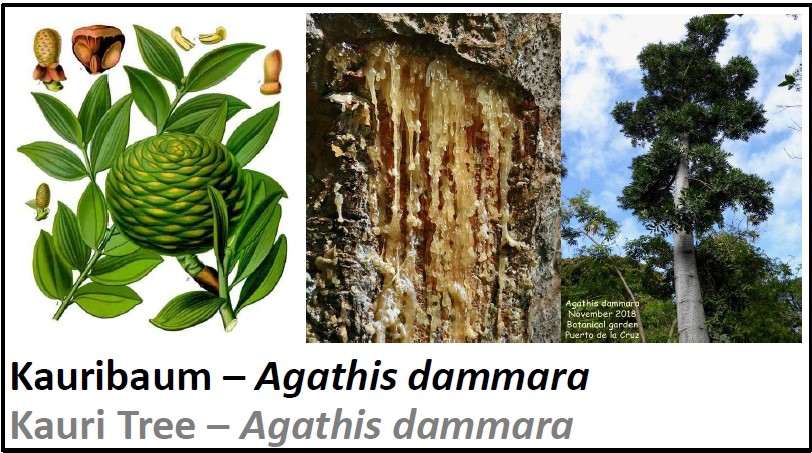Agathis dammara (Kauri Tree)
|
The Kauri Trees occur in several species in the region between Southeast Asia, Malayan Archipelago, New Guinee, New Zealand and Australia. In our Palm House you can find the Borneo Kauri Tree (Agathis dammara) that is found in the North till Vietnam, being centered in New Guinee and Borneo. The Kauri Trees remind of leafy trees at first sight, but they are very ancient conifers that are related with the Araucaria. Thus, these trees are gymnosperms and produce male and female cones that, as in our Pinetree, occur on one plant, but are separate (monecy). The ovule is not enclosed in an ovary, but lie "naked" on the cone scale. The Kauri Trees originate from a time, when the Southern primordial continent Gondwanaland was still intact, by the continental drift they were split into the current distribution pattern. The sea between the subpopulations cannot be crossed any longer, and one would expect that the Borneo Kauri Trees in Vietnam should be a completely different species from those in New Guinee. However, as other living fossils, the Kauri Trees did not change over more than 100 million years. Thus, they are already on the retreat by their evolutionary history. Overexploitation by us humans will do the rest - it is the hunt for the hard, amber-like resin (Kopal) that is used as finish and incent. The malayian word dammar means tear and is used for a couple of resins. The Borneo Kauri Tree is often mixed up with the Dammar Tree due to the Latin name. The Dammar Tree is used for its resin as well, but is related to our Euyonymus. |

